
Video Premiere: The Damnation – “Burning Rain”
Brazilian death thrash trio The Damnation sizzle in new video for “Burning Rain.”
The post Video Premiere: The Damnation – “Burning Rain” appeared first on Decibel Magazine.
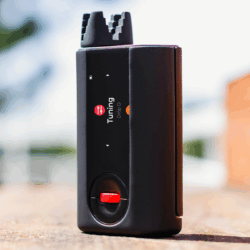
Band Industries Launches Roadie 4 Automatic Guitar Tuner
Band Industries has unveiled Roadie 4, the latest generation of the company’s innovative automatic tuners.Designed for fast, reliable tuning for nearly any instrument with geared pegs, the new tuner is built from the ground up with enhanced accuracy and usability. Roadie 4 delivers a smoother, faster, and more reliable tuning experience. With revamped algorithms and upgraded audio circuitry, it offers excellent noise immunity and pinpoint tuning accuracy, whether you’re tuning on stage, in a noisy rehearsal room, or at home. Key new features include:Completely reengineered algorithms and audio circuitry for superior tuning accuracy and better performance in noisy environmentsLarger 1.9″ full color LCD screen with over twice the display area for greater visibility when tuning New intuitive scroll wheel for lightning fast selection and navigationAuto detect feature: In previous models, Roadie tuned your instrument in a fixed sequence lowest to highest string or required manual string selection. Now, just pluck any string. Roadie 4 will automatically detect which string you are on, tune it precisely, and notify you when it is in tune with a vibration and audible beep Redesigned peg connector to accommodate a wider range of larger and smaller pegsImproved ergonomics: Taller build, anti slip backing, and a more natural, secure grip Band Industries introduced the original Roadie Tuner in 2014, followed by the breakout Roadie 2 in 2017 and the powerful Roadie 3 in 2020. Roadie 4 builds on that legacy and provides even better performance. From electric and acoustic guitars to mandolins, ukuleles, banjos, and more, Roadie 4 tunes almost any instrument with geared pegs. It also winds new strings quickly and accurately, making string changes a breeze. Roadie 4 is available for street price of $139. For more information visit roadiemusic.com.
Read more »KILL SCREEN 070: Luther Manhole of CHAT PILE is a Numbers Guy
Though known for his modern take on noise rock, the guitarist finds himself a slave to the grind.
The post KILL SCREEN 070: Luther Manhole of CHAT PILE is a Numbers Guy appeared first on Decibel Magazine.
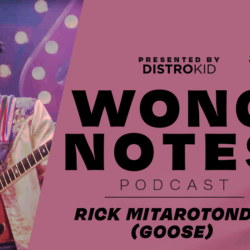
Goose’s Rick Mitarotonda: Can Jambands Write Great Songs? Yes!
Cory Wong and Mitarotonda go deep on jambands, feeling misunderstood, and more.Sound the alarms, tell your neighbors, hire a banner plane: Wong Notes is back. Cory Wong’s beloved podcast returns after a healthy break, and this exciting comeback episode features Wong in conversation with Goose’s Rick Mitarotonda.The Connecticut rock band’s guitarist and vocalist talks through the band’s origins and position in the jam-band and broader music scenes, and Wong and Mitarotonda debate an ancient, critical question: Can jam bands actually write great songs?The duo talk through their philosophies on recording, staying sharp on your instrument, all-star moments and standout players in the jam community, and feeling misunderstood as an artist. Like a good jam set, there are plenty of rich tangents, fascinating rabbit holes, and unexpected insights, so tune in and keep your ears open.
Read more »
When Mike Dawes Turned a John Mayer Classic Into a Viral Fingerstyle Masterclass
Mike Dawes tells us the story of how he put together his jaw-dropping, virtuosic cover of John Mayer’s Slow Dancing in a Burning Room – and why Guitar World had a…
Read more »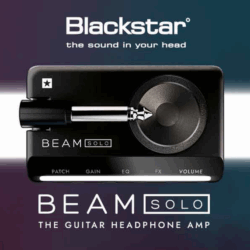
Blackstar Announces BEAM SOLO – Play Time.
At Blackstar, we believe great tone should be ready whenever inspiration strikes. That’s why we created BEAM SOLO — the most immersive, intuitive headphone amp on the market today. Whether you’re jamming at home, on the move, or just grabbing ten minutes of play time between everything else, BEAM SOLO gives you pro-level sound with complete creative freedom — wherever you are.Designed for electric, acoustic and bass guitars, BEAM SOLO fits in your hand, plugs straight into your headphones, and delivers the sound and feel of a real amp. You can shape your tone directly on the unit using the tactile SpeedDial and Light Beam Display, which give instant visual feedback with no menus to navigate. Or you can take full control through the BEAM app, where a growing library of professional-grade amp, cab, mic and pedal models is waiting. Combined with our patented ISF, you can access an infinite number of tonal possibilities to explore, enjoy and create with. With our unique and immersive ‘In The Room’ technology, we’ve made the headphone experience feel alive — like a real amp, in a real space. Every note resonates with depth and presence, making even silent practice inspiring. A single expressive control called XpressFX lets you control multi-layered effects in real time, with smooth transitions that feel natural when adjusting. We’ve also added a headset mic input with studio-quality preamps and reverb, so you can truly immerse yourself with both guitar and vocals wherever you are, and jam along to your favourite tracks seamlessly via Bluetooth audio.In addition to the authentic Blackstar amp models, BEAM SOLO also includes Ampton – our collection of classic software amplifiers, designed at Blackstar HQ in Northampton UK – home to our world-class R&D department. Built on decades of experience in both valve and digital amplifier design, Ampton fuses authentic valve character with advanced digital algorithms, developed by a design team with a unique technical heritage. The name itself is drawn from Northampton, reflecting the roots of our engineers and the history behind the company.Ampton designs are more than just static profiles, they are the result of meticulous design, testing and optimisation – component by component, sector by sector. Starting with Blackstar founder Bruce Keir’s original digital models of our legendary Series One valve amplifiers, every element has been refined over decades. This dedication extends to the tiniest tonal interactions, from cathode follower behaviour to the modelling of preamp DC offsets, ensuring unmatched realism, tone and feel.Another unique aspect of the Ampton designs are the completely accurate tone-stack models. These retain the exact interactivity between controls as the valve amp references, to deliver musicality and interactivity that a mere “capture” snapshot cannot. The power amplifier models go beyond traditional emulation, recreating the true interplay between valves, output transformers and speakers.Our method blends deep analysis and literally hundreds of hours of critical listening. AB sonic tests are matched with precise electrical analysis, while the design team use their decades of voicing expertise. Every nuance is considered while intelligent optimisation results in elegant algorithms with extremely low latency.If you head over to the BEAM app, you’ll find Official Artist Patches to explore from an ever growing list of all-stars including Doug Aldrich (The Dead Daisies), Gus G. (Firewind), Will Sergeant (Echo & The Bunnymen) and many more. You can join in the fun and share your own tones on the online community and download other creators’ patches within a vibrant global community of players just like you. You can even share your favourite patches over message to your friends with just a simple tap.Within the ‘Music’ section of the app, you’ll find a host of backing tracks and video lessons to make sure that you can stay inspired and continue your learning journey. The BEAM SOLO is a complete one-stop solution for guitar players today.We designed BEAM SOLO to give every guitarist the freedom to play and create anywhere, instantly, and without compromise. Whether you’re shaping your sound with a twist of the SpeedDial or diving deep into your rig choices via the app, it always feels intuitive and immersive. You can record vocals, jam with backing tracks, or just enjoy the feel of a cranked valve amp in your headphones — all from a device that fits in your pocket.We’re constantly adding new sounds and features to the BEAM app, so your rig evolves with you. With ISF, XpressFX, SpeedDial, Light Beam Display and community connectivity, BEAM SOLO gives you the tools to stay inspired, have fun and sound incredible — wherever you are.
Read more »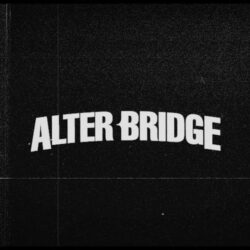
Alter Bridge Release First Track/Video “Silent Divide”
On the heels of the excitement from the recent announcements of their upcoming 8th studio album and their Blackbird festival in Wales next summer, acclaimed rockers Alter Bridge are releasing the first piece of music in over two years, “Silent Divide.” The track from the quartet comprised of Myles Kennedy on vocals/guitars, Mark Tremonti on guitars/vocals, Brian Marshall on bass and Scott Phillips on drums shows the band is back and ready to pick up where they left off in 2023. The brooding track begins with the signature guitar tones of Kennedy and Tremonti before the rhythm section of Marshall and Phillips join in. The chorus is powered by Kennedy’s haunting descent as he sings: “Keep your head down, ride out the silent divide.” A music video for “Silent Divide” is also available today that the band has been teasing for days. A comedic opening skit was released of Tremonti, Marshall, and Phillips calling Kennedy’s mom to get the band back together as Myles hangs in his mom’s basement. That scene gives way to a performance of the 4 guys playing together in a small room – a throwback to the way it all started for them. The video was directed by JT Ibanez, and the song can be found in all formats here:
With more than two decades performing together, Alter Bridge show no signs of slowing down. The new, self-titled album from Napalm Records, Alter Bridge, is comprised of 12 all new tracks from the band and features some of their most iconic moments on record. Songs like “Rue The Day,” “Disregarded” and “Scales Are Falling” will fit alongside any of the classic songs from Alter Bridge’s catalog. “Trust In Me” shows Myles and Mark sharing vocal duties as Myles handles the verse duties while Mark takes the chorus. That strategy is flipped on “Tested And Able” as Mark handles the verses and Myles takes on the choruses behind one of the band’s heaviest intros to date, giving way to an unforgettable melody. The album closer “Slave To Master” is an epic track that Alter Bridge has come to be known for and is the longest song the quartet has recorded to date. The band worked with longtime collaborator and producer Michael “Elvis” Baskette on their eighth album. Alter Bridge will be released on January 9, 2026, and is now available for pre-order at: https://www.lnk.to/AB-AlterBridge.
The track listing for Alter Bridge is:1) Silent Divide (5:06) 2) Rue The Day (4:46) 3) Power Down (4:08) 4) Trust In Me (4:48) 5) Disregarded (3:55)6) Tested And Able (4:36) 7) What Lies Within (5:07) 8) Hang By A Thread (4:11) 9) Scales Are Falling (5:54) 10) Playing Aces (4:05) 11) What Are You Waiting For (5:00) 12) Slave To Master (9:03)To coincide with the release of the new music, Alter Bridge is announcing a headline U.S. tour to accompany their already announced European tour. The band is heading out on the What Lies Within U.S. Tour featuring Filter or Sevendust and Tim Montana as support in select markets. The tour kicks off on April 25 in Orlando, FL and runs through May 24 where it wraps in Tampa, FL. Along the way, the tour will make stops in Dallas, TX (April 29), Chicago, IL (May 6) and Huntington, NY (May 12) to name a few. More information on all tickets and VIP packages for the upcoming tour can be found at www.alterbridge.com.What Lies Within U.S. Tour
Apr 25 – Orlando, FL – House of Blues – TMApr 26 – Atlanta, GA – Coca-Cola Roxy – 7D/TMApr 28 – Houston, TX – Bayou Music Center – F/TMApr 29 – Dallas, TX – South Side Ballroom – F/TMMay 1 – Tulsa, OK – Skyline Event Center at Osage Casino Hotel – F/TMMay 2 – Omaha, NE – Steelhouse Omaha – F/TMMay 5 – Green Bay, WI – EPIC Event Center – F/TMMay 6 – Chicago, IL – The Salt Shed – F/TMMay 9 – Atlantic City, NJ – Event Center at Borgata Hotel Casino & Spa – FMay 10 – Boston, MA – Citizen House of Blues Boston – F/TMMay 12 – Huntington, NY – The Paramount – F/TMMay 13 – Montclair, NJ – The Wellmont Theater – F/TMMay 18 – Pittsburgh, PA – The Roxian Theatre – F/TMMay 19 – Detroit, MI – The Fillmore Detroit – F/TMMay 21 – Nashville, TN – The Pinnacle – 7D/TMMay 22 – Birmingham, AL – Avondale Brewing Company – F/TMMay 24 – Tampa, FL – Seminole Hard Rock Tampa Event Center – F/TMPreviously announced What Lies Within Tour Dates
Jan 15 – HAMBURG, GERMANY – Sporthalle Jan 17 – OSLO, NORWAY – Sentrum SceneJan 18 – OSLO, NORWAY – Sentrum SceneJan 20 – STOCKHOLM, SWEDEN – Annexet Jan 22 – HELSINKI, FINLAND – Ice Hall Black BoxJan 24 – COPENHAGEN, DENMARK – KB HallenJan 25 – BERLIN, GERMANY – Columbiahalle Jan 27 – GLIWICE, POLAND – Prezero Arena GliwiceJan 28 – BUDAPEST, HUNGARY – Barba Negra Jan 30 – VIENNA, AUSTRIA – Gasometer Jan 31 – ZAGREB, CROATIA – Bocarski DomFeb 02 – ROME, ITALY – Atlantico Feb 03 – BERGAMO, ITALY – ChorusLive ArenaFeb 05 – ZURICH, SWITZERLAND – The HallFeb 06 – LYON, FRANCE – Halle Tony GarnierFeb 08 – BARCELONA, SPAIN – Razzmatazz 1Feb 10 – LISBON, PORTUGAL – Sagres Campo PequenoFeb 12 – MADRID, SPAIN – Palacio VistalegreFeb 13 – BORDEAUX, FRANCE – Arkea ArenaFeb 15 – LUXEMBOURG, LUXEMBOURG – Rockhal Feb 17 – OBERHAUSEN, GERMANY – Oberhausen TurbinenhalleFeb 18 – PARIS, FRANCE – Zenith Feb 20 – MUNICH, GERMANY – Zenith Feb 22 – AMSTERDAM, NETHERLANDS – Ziggo DomeFeb 23 – BRUSSELS, BELGIUM – Ancienne BelgiqueFeb 25 – NEWCASTLE, UNITED KINGDOM – Utilita Arena Feb 26 – MANCHESTER, UNITED KINGDOM – AO ArenaFeb 28 – DUBLIN, IRELAND – 3Arena Mar 02 – GLASGOW, UNITED KINGDOM – OVO Hydro Mar 04 – LONDON, UNITED KINGDOM – The O2Mar 05 – NOTTINGHAM, UNITED KINGDOM – Motorpoint ArenaJun 27 – CARDIFF, WALES – Blackbird Festival @ Cardiff CastleBack in 2004, four lifelong musicians got together down in Florida. Even though they had traveled separate paths, similar lessons learned, wisdom earned, and dues paid united these gentlemen—Myles Kennedy [vocals, guitar], Mark Tremonti [guitar, vocals], Brian Marshall [bass], and Scott Phillips [drums]—as Alter Bridge. Over the ensuing two decades, the band endured countless trials and tribulations, defied every odd, and rose to the head of the pack as a hard rock juggernaut, cementing a singular legacy by selling out arenas, gathering nearly 1 billion streams, inciting international acclaim, and quietly attracting a diehard audience. Beginning with the Top 5 entry of 2004’s gold certified One Day Remains, the band have scored six consecutive Top 20 debuts on the Billboard 200. Among a myriad of highlights, Guitarist Magazine applauded “Blackbird” for the “Greatest Guitar Solo of All Time,” the ABIII single “Isolation” vaulted to #1 on the Billboard Mainstream Rock Chart, 2013’s Fortress received rare perfect scores from KERRANG! and Total Guitar, and Walk The Sky shook the Top Rock Albums Chart at #1. Beyond packing O2 Arena and Royal Albert Hall, Classic Rock hailed 2022’s Pawns & Kings as “the Rolls-Royce of Alter Bridge records” in a 4.5-out-of-5-star review. Plus, the latter LP garnered praise from American Songwriter, Guitar World, and Loudwire, while Billboard christened them “one of America’s premiere hard rock quartets.” Channeling the same hunger, the band continue to push themselves on their self-titled eighth full-length offering, Alter Bridge [Napalm Records]. It embodies everything they’re known for such as the precise riffs, towering hooks, and solos that practically break guitar strings as they burst through the clouds.
Video Premiere: Prisoner – “Double Vision”
Watch Calgary’s Prisoner, crank the amps and swing for the fences with their new video for “Double Vision.”
The post Video Premiere: Prisoner – “Double Vision” appeared first on Decibel Magazine.
Track Premiere: Elepharmers – ‘Drifter’
Hear a new jam from Italian stoner metal trio Elepharmers from their forthcoming Western Wilderness LP.
The post Track Premiere: Elepharmers – ‘Drifter’ appeared first on Decibel Magazine.
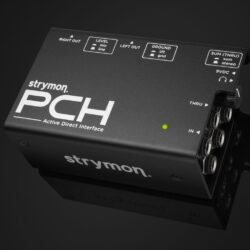
Strymon Introduces New PCH Stereo Active DI
Strymon Engineering has introduced the new PCH Stereo Active Direct Interface, an advanced stereo direct box with a built-in headphone amplifier.Featuring impressive specs that out-perform DIs anywhere near its price range, PCH also has a unique feature expected to delight pedalboard users: a powerful built-in headphone amp, loud and clean enough to drive even high impedance headphones. Now you can rest easy knowing that the sound of your pedalboard won’t change even a little when passing through PCH, and the headphone amp means you won’t have to ask anyone how you sound. You’ll know.
PCH makes it easy to monitor or practice while listening to the sound of your entire rig or pedalboard in full stereo. No matter what instrument or style of music you play, if you need to connect unbalanced outputs to a PA, recording interface or flat response speaker system, PCH is the ultimate choice for an absolutely transparent stereo direct interface – and it’s the only one that you can listen to locally via the stereo headphone amp.
Housed in a battle-ready 3mm extruded aluminum chassis, PCH requires 9VDC power, which it converts internally via a custom single-channel Ojai power supply to 24VDC. That extra voltage and high current renders the interface nearly un-clippable, and allows it to achieve a max signal-to-noise ratio of 135db, a hyper-flat frequency response of +/- 0.25db from 10Hz to 80 KHz, and gives the headphone amplifier enough power to cleanly drive even 600 ohm headphones without distortion.
PCH features include: • Two channel design – use in stereo or dual mono, whichever fits your setup• Runs on 9VDC – internally converted to 24V to be virtually unclippable• Stereo headphone amplifier powerful enough to drive high impedance headphones• Switchable Mic/Line level operation for the XLR outputs• Defeatable ground lift for the XLR outputs• Defeatable Sum for the Thru outputs• Runs off of a modified internal mini Ojai power supply for ultimate performance• Extremely low THD (Total Harmonic Distortion)• Bulletproof construction that will stand up to the abuse of the road“As the music world continues to embrace quiet stage volumes, instrumentalists increasingly turn to amp-less live rigs to achieve good tones at low volumes”, said Sean Halley, Strymon’s Head of Marketing. “Unfortunately this creates problems for players trying to hear their entire pedalboard when they’re anywhere else but onstage. With a PCH at the end of your signal chain, you get a pristine direct interface and a killer built-in headphone amp to make sure that what you’re sending to the PA or recording rig is exactly what you intend to – and it makes silent practicing a joy.”
Gregg Stock, Strymon co-founder and analog circuit guru adds “while we’re more recognized for our DSP effects pedals, they wouldn’t sound the way they do if the analog side wasn’t just as advanced. With PCH we’ve brought that analog expertise to a new market, because it doesn’t matter whose pedals are on your board, you need a bulletproof and pristine-sounding DI to interface with the outside world. PCH isn’t just for guitarists, it’s for anyone with a pedalboard.”
The PCH Active Stereo DI is available now directly from Strymon and from dealers worldwide for $279 US.
